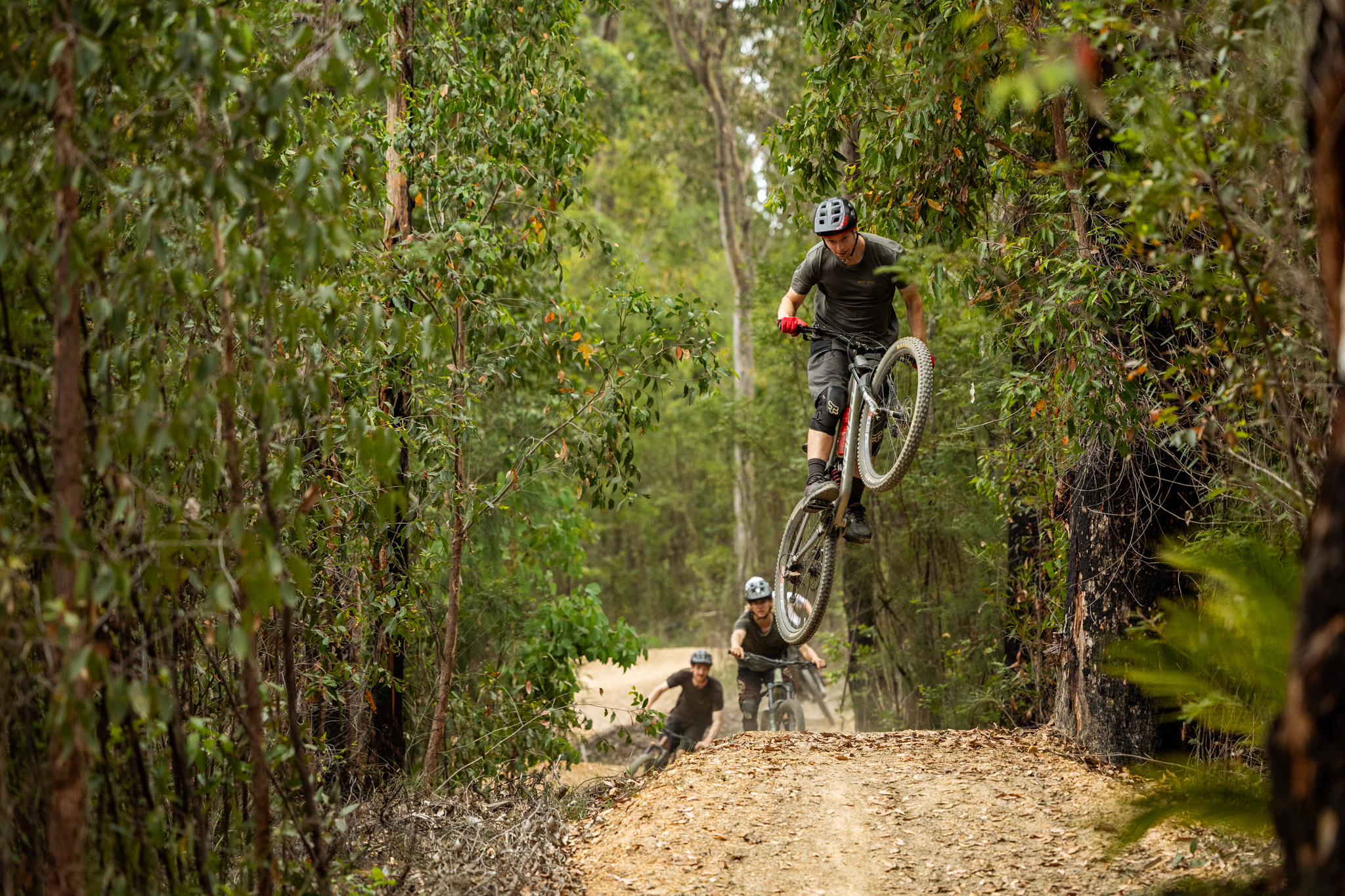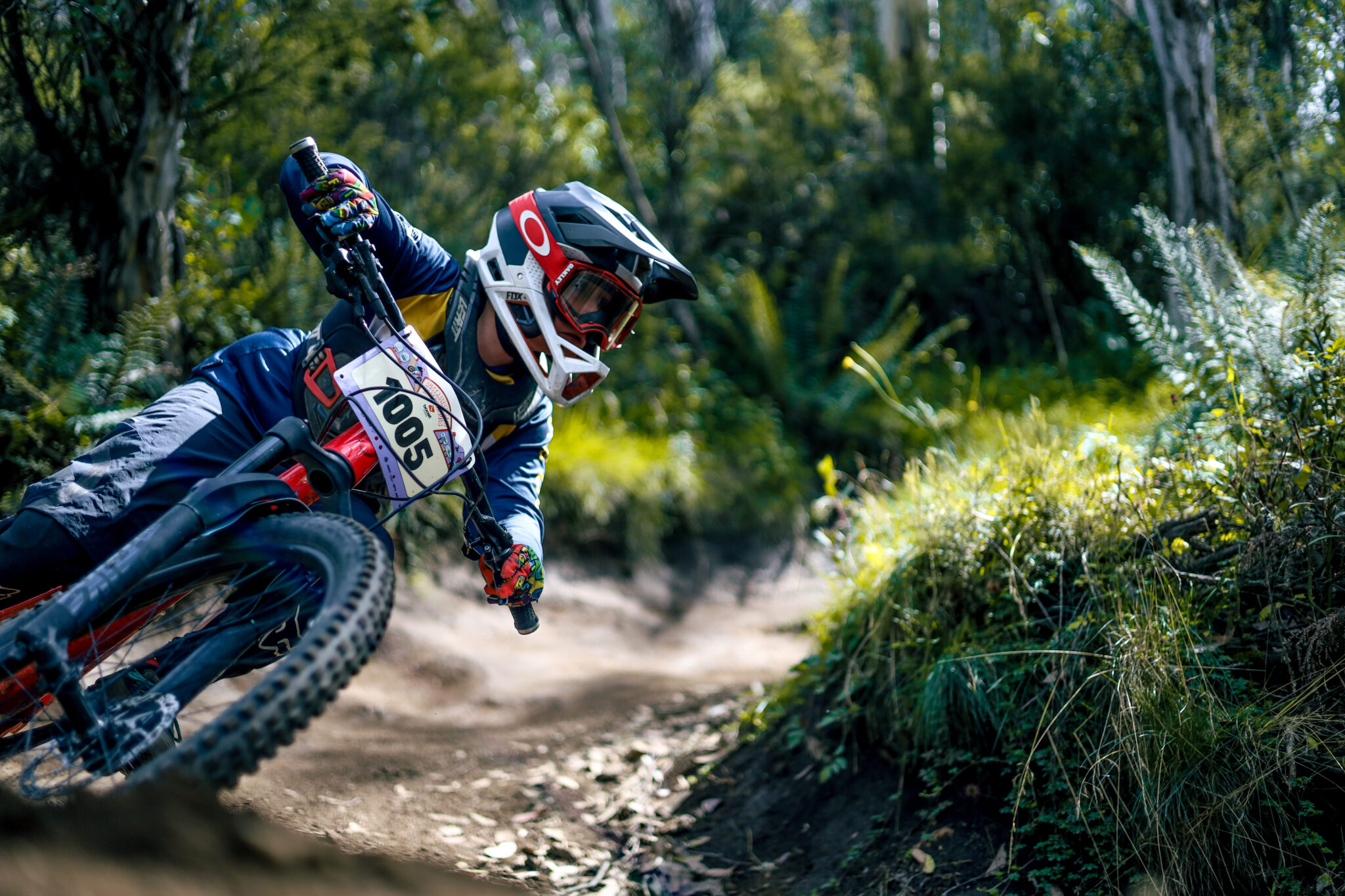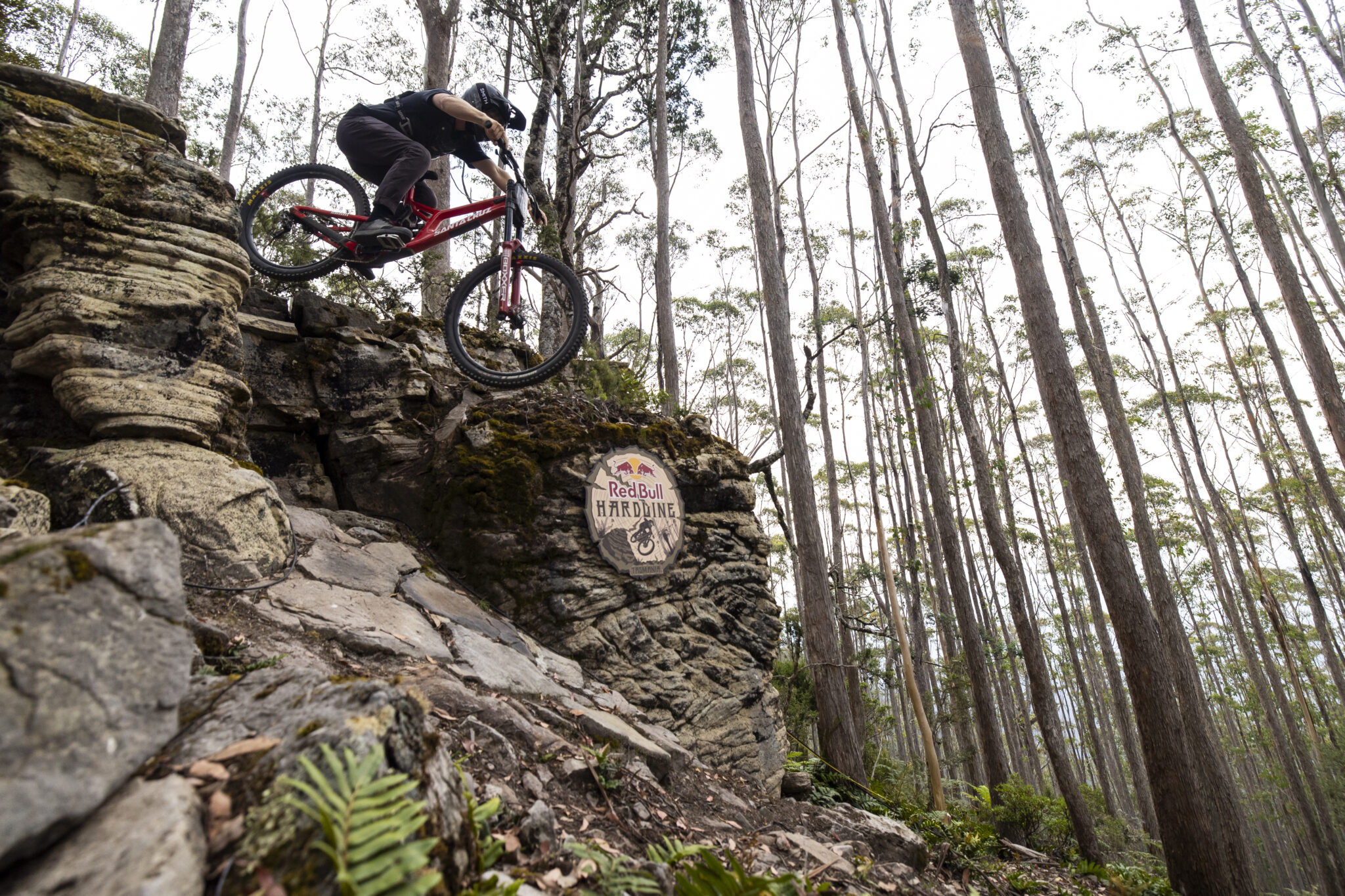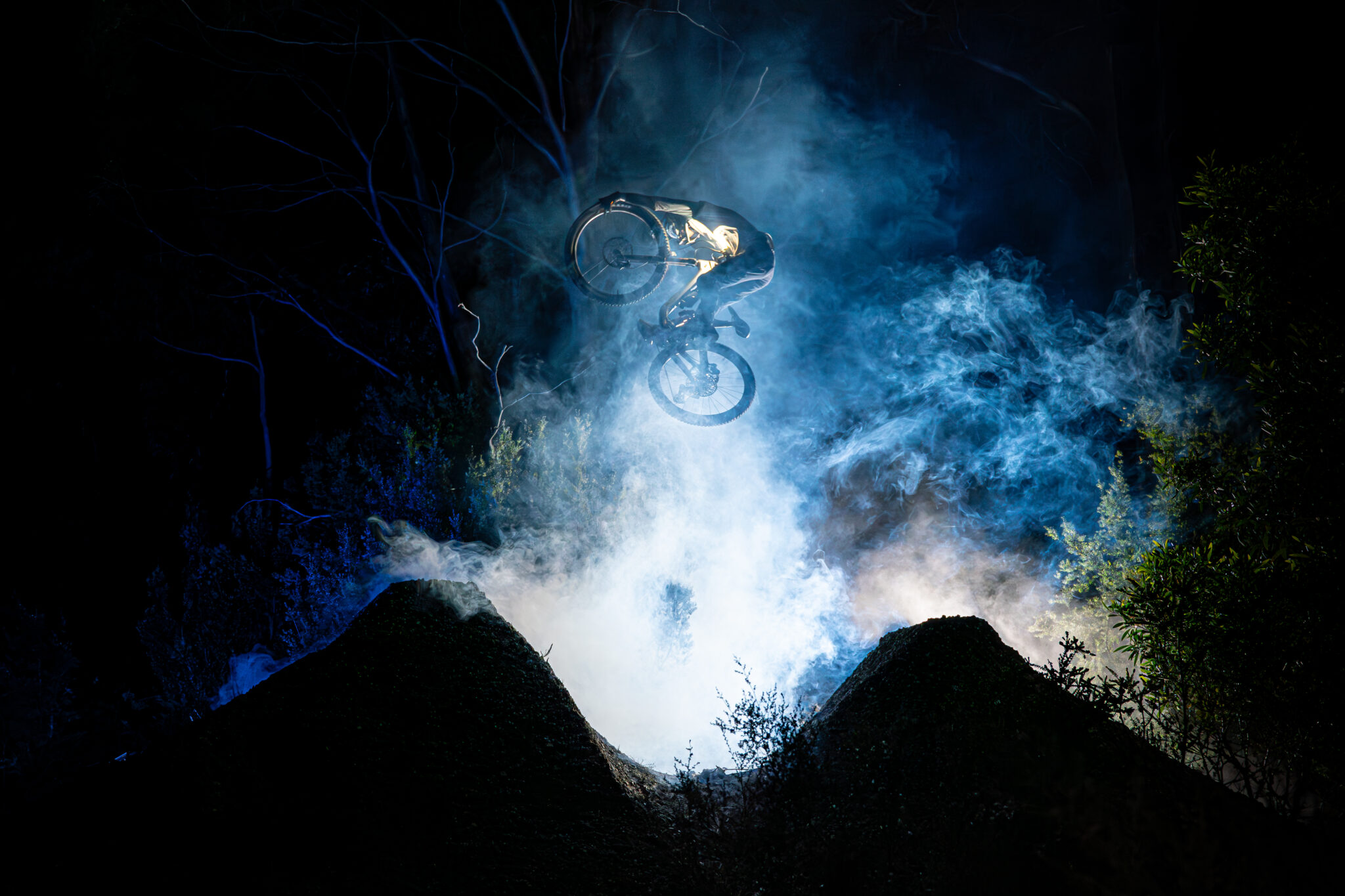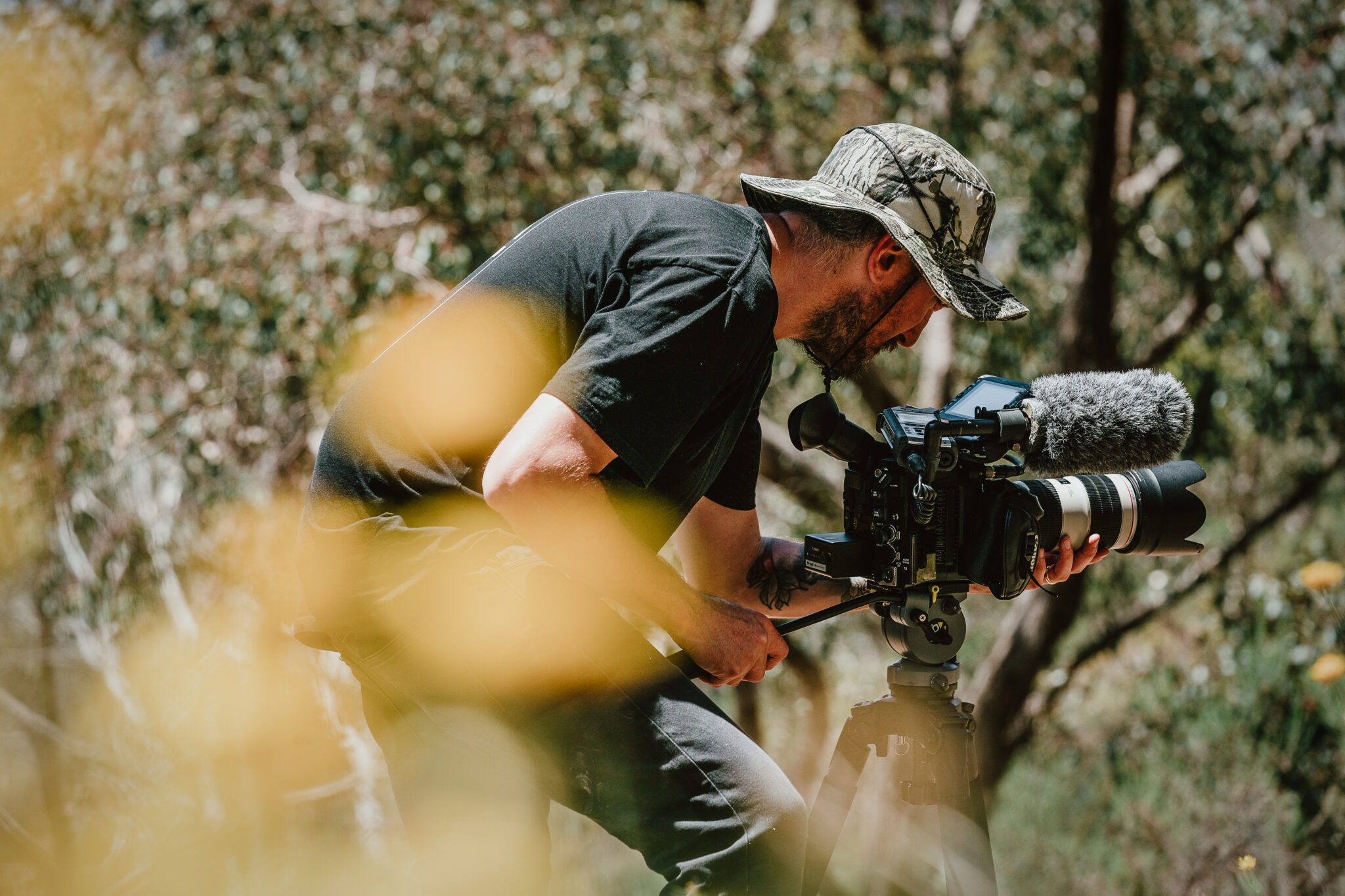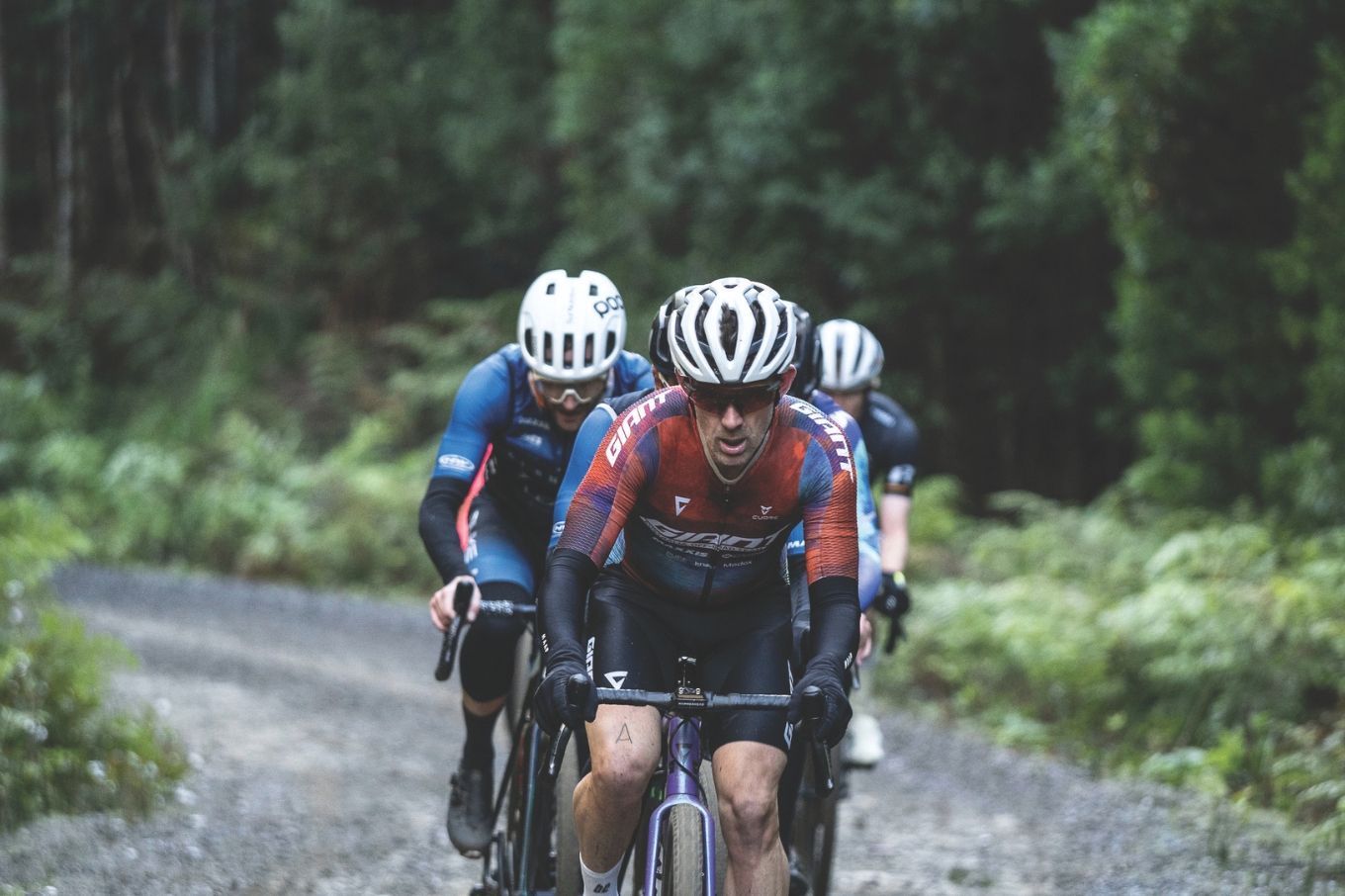Why Are Mogo's Trails Sooooo Good?
Designing trails for a peak experience – physically, mentally and socially
The first 70km of purpose-built trails at Mogo, on the NSW South Coast, officially opened in August, with a total of 135km planned (now finished!) in total. The hype surrounding the Mogo MTB Trails is huge and early experiences confirm they more than deliver. But this article isn’t (only) about that.
READ: 2025 Guide To Mountain Biking at Mogo
Hitting the trails with a group, zeroing in on one feature then the next, holding good speed despite never having seen the trail before…I couldn’t stop wondering: what goes into creating an experience like that? One that delivers in terms of the physical experience of riding, but also the mental experience?
Juliane and Martin Wisata run Rocky Trail Destination, which is the Principal Contractor for the Mogo MTB Trails project. They bring years of experience to the project from running events under the Rocky Trail Entertainment banner.
Martin says there are two types of trends they’ve been keeping an eye on during the planning stages for the project: social and technological. E-bikes and kids on bikes have a huge impact on both types of trends, he explains.
While the tech side of e-bikes is obvious, Martin reminds me that socially “riders of different physical and riding abilities can now spend the day together as the climbs are effectively neutralised.” He also speaks about innovations in kids’ bikes and the huge increase in incredibly capable younger riders hitting the trails.
“The challenge in trail design was to build descents where the entire group can all have fun and meet again at the bottom. We believe we have achieved that at the Mogo Trails by creating multiple hubs where trails start and finish.”
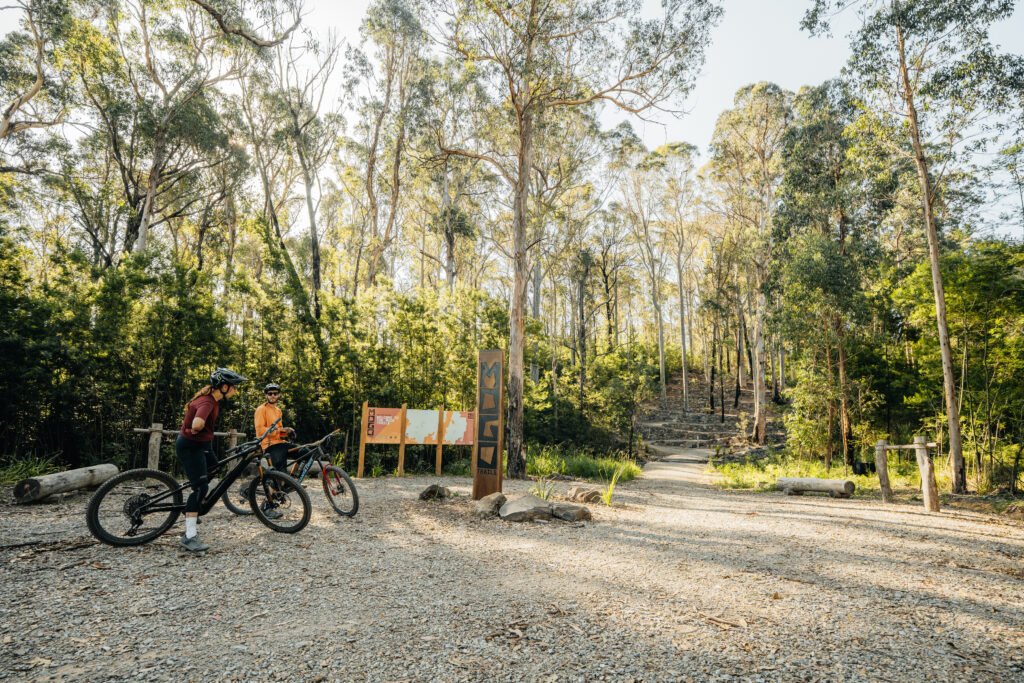
Multiple descents allow riders to pick the level of technical challenge they’re seeking and eliminate the need to find a trail that suits everyone. Climbing back up via a gentle gradient with many twists and turns is where a lot of the chatting happens.
Beyond the design of the area as a whole, I was struck by how each trail has a different character. Built by Next Level MTB, they’re feature-filled keeping your mind tuned in, and while they never stay in a straight line for too long, they give the feeling of taking you somewhere. Gone are the days of riding as many corners as you can fit in a small amount of space. Like the Narooma trail network 45 minutes further south, the area covered by the trails is huge.
READ: Progressive Trail Building Design
“The Next Level crew are not just trail builders but artists in my view,” says Martin. “Water management has always been the number one topic when it comes to trail design. But they put equal emphasis on rider-speed management. This has a huge impact on trail erosion, safety and fun.” High lines into corners, for example, deliver riders from one feature into the next without the need for panic-braking as they spot the ideal line too late and madly scrape off all their speed.
“The trail manages the speed, not the rider’s brakes,” says Martin.
Martin’s a pretty excitable guy but the most excited I saw him was when he was talking about the lack of braking ruts after the trails had been open for a few weeks.
“The entire project group agreed to invest more into the trail construction in order to save on trail maintenance dollars later on. This means we plan a lot of rock armouring, water management and also make sure that wherever braking ruts are likely to form features are put in place that naturally slow the riders down.” It’s a clever tactic – one that means riders feel more flow in the short term linking each feature together, and also in the longer term as the trails stay in better condition.
The logic behind Mogo’s mojo makes sense when it’s spelt out, and it speaks to trends happening in trail building across the country. What surprised me is how, when done well, the huge amount of effort that has gone on behind the scenes almost feels invisible. The trails flow, the social experience expands, euphoria bursts out of riders as though they’re a well-shaken soda can.
Next time you have a ‘peak experience’ on the trails, take a moment to think about the work that went into it. How does the trail do the thinking for you? How does the place impact your experience? How do you see future social and technological trends shaping what an ideal day on a bike feels like for you?
Learn more about using your mind to get more out of your time on the bike from Kath Bicknell at:
Web: intelligentaction.cc
Insta: @Intelligent_Action
Facebook: Intelligent Action
